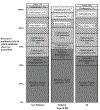Antibiotic Prescribing for Children in United States Emergency Departments: 2009-2014
- PMID: 30622156
- PMCID: PMC6581044
- DOI: 10.1542/peds.2018-1056
Antibiotic Prescribing for Children in United States Emergency Departments: 2009-2014
Abstract
: media-1vid110.1542/5972296744001PEDS-VA_2018-1056Video Abstract OBJECTIVES: To characterize and compare ambulatory antibiotic prescribing for children in US pediatric and nonpediatric emergency departments (EDs).
Methods: A cross-sectional retrospective study of patients aged 0 to 17 years discharged from EDs in the United States was conducted by using the 2009-2014 National Hospital Ambulatory Medical Care Survey ED data. We estimated the proportion of ED visits resulting in antibiotic prescriptions, stratified by antibiotic spectrum, class, diagnosis, and ED type ("pediatric" defined as >75% of visits by patients aged 0-17 years, versus "nonpediatric"). Multivariable logistic regression was used to determine factors independently associated with first-line, guideline-concordant prescribing for acute otitis media, pharyngitis, and sinusitis.
Results: In 2009-2014, of the 29 million mean annual ED visits by children, 14% (95% confidence interval [CI]: 10%-20%) occurred at pediatric EDs. Antibiotics overall were prescribed more frequently in nonpediatric than pediatric ED visits (24% vs 20%, P < .01). Antibiotic prescribing frequencies were stable over time. Of all antibiotics prescribed, 44% (95% CI: 42%-45%) were broad spectrum, and 32% (95% CI: 30%-34%, 2.1 million per year) were generally not indicated. Compared with pediatric EDs, nonpediatric EDs had a higher frequency of prescribing macrolides (18% vs 8%, P < .0001) and a lower frequency of first-line, guideline-concordant prescribing for the respiratory conditions studied (77% vs 87%, P < .001).
Conclusions: Children are prescribed almost 7 million antibiotic prescriptions in EDs annually, primarily in nonpediatric EDs. Pediatric antibiotic stewardship efforts should expand to nonpediatric EDs nationwide, particularly regarding avoidance of antibiotic prescribing for conditions for which antibiotics are not indicated, reducing macrolide prescriptions, and increasing first-line, guideline-concordant prescribing.
Copyright © 2019 by the American Academy of Pediatrics.
Conflict of interest statement
POTENTIAL CONFLICT OF INTEREST: The authors have indicated they have no potential conflicts of interest to disclose.
Figures


Comment in
-
Improving Antimicrobial Stewardship in Pediatric Emergency Care: A Pathway Forward.Pediatrics. 2019 Feb;143(2):e20182972. doi: 10.1542/peds.2018-2972. Epub 2019 Jan 8. Pediatrics. 2019. PMID: 30622157 Free PMC article. No abstract available.
References
-
- Gindi RM, Jones LI. Reasons for Emergency Room Use Among U.S. Children: National Health Interview Survey, 2012. Vol Data Brief No. 160: NCHS July 2014. - PubMed
-
- Bourgeois FT, Shannon MW. Emergency care for children in pediatric and general emergency departments. Pediatr Emerg Care. 2007;23(2):94–102. - PubMed
-
- Raofi S, Schappert SM. Medication therapy in ambulatory medical care: United States, 2003–04. Vital Health Stat 13 2006(163):1–40. - PubMed
-
- Hersh AL, Shapiro DJ, Pavia AT, Shah SS. Antibiotic prescribing in ambulatory pediatrics in the United States. Pediatrics. 2011;128(6):1053–1061. - PubMed
-
- Fleming-Dutra KE, Hersh AL, Shapiro DJ, et al. Prevalence of Inappropriate Antibiotic Prescriptions Among US Ambulatory Care Visits, 2010–2011. JAMA. 2016;315(17):1864–1873. - PubMed
Publication types
MeSH terms
Substances
Grants and funding
LinkOut - more resources
Full Text Sources
Medical

